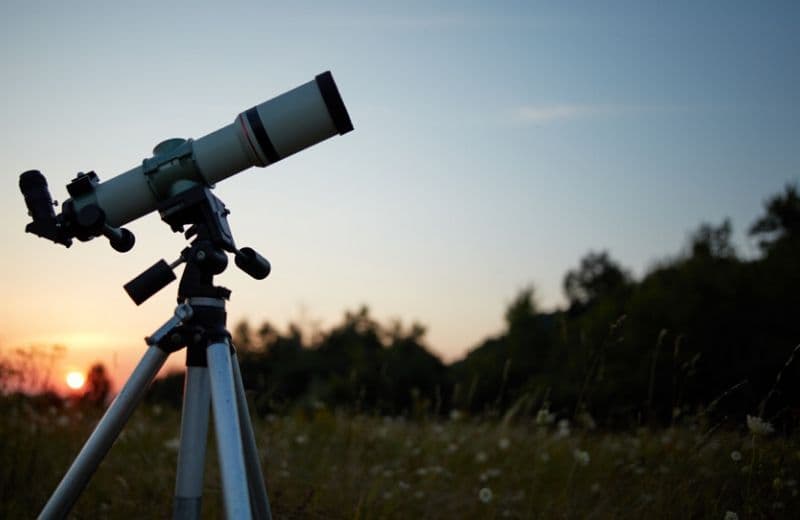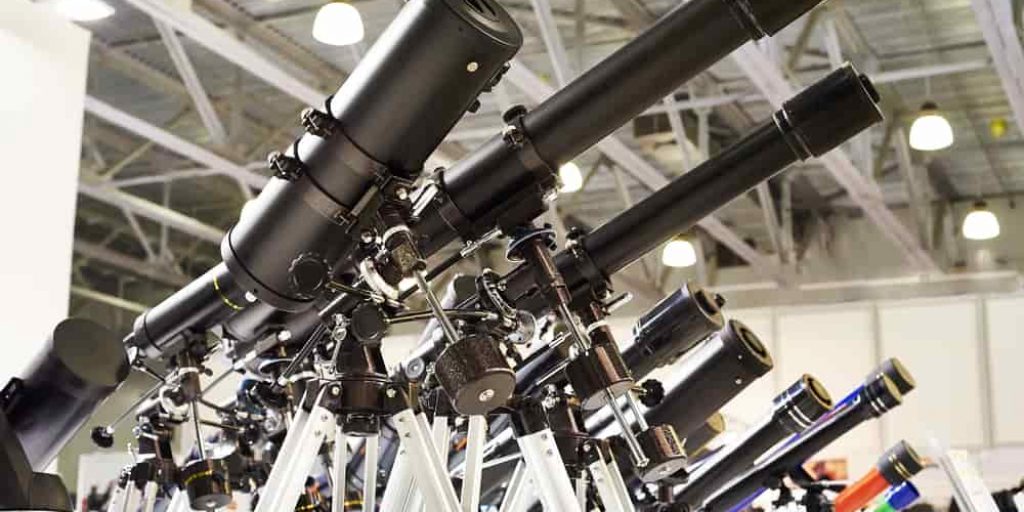
Buying your first telescope can sometimes seem a bit overwhelming. After all, there are billions of different models on the market, all of which have different features and specifications that non-astronomers aren’t really familiar with. Stargazing is one of those hobbies that is very rewarding but requires patience, research and dedication. And it starts from the moment you choose your first telescope. Let’s take a look at the most important things to know and do before buying your first telescope.
Table of Contents

We have decided to divide this guide into two distinct parts: the first part deals with general things to consider before buying a telescope. The second part is intended to inform you about the technical aspects of a telescope. Finding the right balance between the two will ensure that you are not disappointed with your purchase. Let’s dive in!
The telescope you need to visually observe planet s of the solar system and the telescope you need to take images of deep-sky objects such as galaxies and nebulae are very different. Some scopes are only made for visual observation and others are for deep-sky imaging. They are very different in terms of specifications and features, but also in terms of price. Imaging is much more expensive and more complex to learn. It is probably not suitable for a beginner.
Usually, the amateur astronomer starts with the visual observation of easy targets like Jupiter or Saturn and learns how to use his telescope inside out. When they are more experienced, they might be interested in imaging deep-sky objects and get a telescope more suited for astrophotography.
Deciding on your budget will make your life easier by narrowing down the number of telescopes from which you can choose. It will also indirectly force you to study your options more thoroughly because you want to buy the telescope at the best value for money. If this is your first purchase, it is better to choose an entry-level/easy-to-use telescope rather than a more recent complex model. You won’t know what to do with a £3,000 telescope and the learning curve will probably leave you very frustrated and feel like you’ve wasted your hard-earned money. Take it slow, master your beginner telescope, learn everything you can about stargazing, then upgrade your telescope. That’s the best way to get into this hobby. Avoid children’s telescopes and very small telescopes (50 mm / 60 mm / 70 mm), as they tend to have inferior optics and are subject to a large amount of chromatic aberration.
Astronomy is an expensive hobby, it’s true, but that doesn’t mean that you can’t get decent rig (telescope + mount) on a small budget.
There are so many different telescopes available that it can be difficult to make a choice. And let’s be honest, they can be a significant investment… Some telescopes cost a few hundred dollars, so you may want to do some proper research on a model before buying it. Research thoroughly each telescope, each brand, the quality of the material used, etc. After all, you want a telescope that will last you for years.
The best way to find “in-the-field” information about a telescope is to consult online forums. Forums like Cloudy Nights and Stargazers Lounge are filled with experienced astronomers who discuss every technical aspect of a telescope. They know a lot about telescopes and can explain to you if a model can perform well and suit your need. They are also very friendly and helpful, so don’t be afraid to ask questions about the telescope you are considering acquiring.
Telescopes are a sophisticated but very fragile piece of equipment. As a first-time buyer, you probably won’t know where to look for a hidden defect on a used telescope:
Unless you are an experienced amateur astronomer or have a friend who knows about this kind of thing, I recommend that you stay away from second-hand equipment. By choosing a brand new telescope, you will have the peace of mind of knowing that the equipment is not faulty and under warranty.
Many manufacturers market their telescopes as “a window to the cosmos” or “a way to explore the universe”. And while this sounds pretty good on paper, it comes to no surprises that it is not necessarily what your future telescope can do! Why am I mentioning this?
Well, there are many photos available online that show incredible views of galaxies, planets and other deep sky objects. Many people have sent me messages asking if they could see this through a small telescope. The answer is no… These images have been processed by experienced astrophotographers and do not represent what you would see through a telescope eyepiece.
The images you will see when observing the planets through a telescope will be much less impressive than a processed image. Don’t forget that they are, however, live views of celestial objects located millions of miles away from you… It is an incredibly humbling experience to observe planets like Mars or Saturn from your garden. I think everyone should experience this at least once.

The image on the right has been created by “stacking” dozens of pictures of Jupiter. The live view of the gas giant in your eyepiece will be different.
This is the technical part and where most people tend to feel overwhelmed. I know this because I’ve been through it 🙂 When you hear words like aperture, focal length, magnification power, etc., it’s very easy to feel lost with all this information. However, every single of those specifications combined together dictate the performance of your future telescope and what you will be able to observe with it.
There are more than 17 types of telescope. In our case, there are only two that we need to know about: refracting telescope and reflecting telescope.
This type of telescope is easy to use and requires very little maintenance (no collimation required). They can be used as soon as they come out of their box and are simple to install. They work with glasses, which generally makes them more expensive than telescopes that use mirrors. They are particularly suitable for observing bright objects such as the moon and the planets. A refractor with a large aperture and a short focal length is ideal when starting out in deep-sky imaging.
Newtonian reflectors are a type of telescope that uses curved mirrors to reflect light to a secondary mirror inside the OTA (optical tube assembly). Since the mirrors are cheaper to make, reflectors are a cheaper way to obtain a telescope with a large aperture and long focal length. They do not suffer from chromatic aberration like refractors but require regular collimation. Dobsonian telescopes are particularly good at resolving planets in minute detail, even in areas affected by light pollution.

The aperture is the size (in inches or millimetres) of the optical part collecting the light on a telescope that is then transmitted to the focal point. The nature of this optical part is different depending on the type of telescope you wish to purchase. The larger the aperture, the more light is collected, which results in a greater image resolution. Keep in mind that the price also increases exponentially when the aperture is larger. Telescopes with an aperture from 2 to 6 inches are a good starting point for beginners.
For more in-depth information, check out our article on telescope aperture.
The focal length is the distance (in millimetres) that light travels inside the telescope, from its entry point (the aperture) to the exit point (the focus). Its value influences the size of the field of view and the magnifying power of the telescope. A short focal length is ideal for observing astronomical objects such as nebulae, open clusters and large galaxies (Andromeda galaxy), while a longer focal length is preferable for observing planets and the moon.
For more in-depth information, check out our article telescope focal length.
Not many people realise this but the telescope mount is one of the most important elements of your telescope kit. If you end up with a tripod that’s made of cheap material and is not strong enough to support the weight of your telescope tube steadily, you will end up with a very wobbly setup. The steadiness of your telescope is crucial both for observing and imaging celestial objects. Pay close attention to the material used on the mount, the quality of the fixings and the sturdiness of each leg and the payload capacity.
There are two main types of mount for telescopes:
Eyepieces are one of the most important accessories you need in order to use your telescope to its full potential. Without getting too technical, the eyepiece allows the light coming off the focuser to be transmitted to your eyes without being too focused. Without it, you wouldn’t be able to see any image.
It is important to make sure that your eyepieces are made with high-quality optics, as they are a key element for the magnifying power and field of view of your telescope.
A Barlow lens is also a great way to increase your focal length and push the magnification power of your telescope a little further.